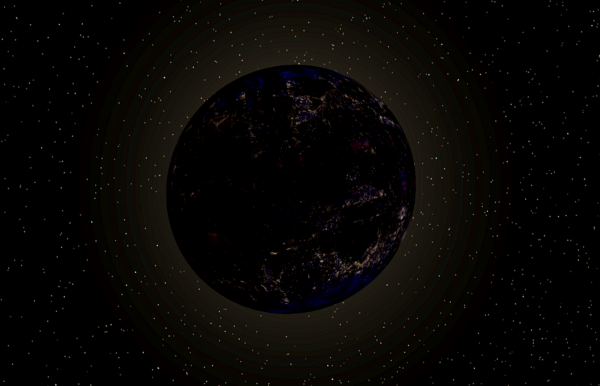BY LETTER
Niaanyo
Galactography > Other Major Polities, Empires, and Meta-Empires > Hiders
Galactography > Regions of Space > Outer Volumes
Galactography > Systems and Worlds > Systems & Worlds M - N
Galactography > Regions of Space > Outer Volumes
Galactography > Systems and Worlds > Systems & Worlds M - N
Hider world in deep space | |
 Image from Alex Mulvey | |
| The surface habitats on this word are mostly inhabited by clades who use vision as their primary sense, and are often brightly lit | |
| Planet | Niaanyo Type Stephensonian deep space world Radius 5019km Date Colonised 7879 AT |
|---|---|
| Location | This world is far from any star, and is heated only by radioactive decay and artificial fusion. RA 20,1,23 Dec 21,20,16 Distance 2212 ly Constellation Sagitta |
The world they had found, which they called Niaanyo, was a cold Stevensonian planet with a rocky core and an icy surface, shrouded in a thin layer of hydrogen and helium barely above the temperature of the cosmic microwave background. The Tulu vecs burrowed into the ice of this world and constructed a honeycomb of tunnels, using hotpoint fusion generators to provide energy for themselves.
 Image from Steve Bowers | |
| Niaanyo as seen from space | |
Blind-sight
When the Tulu vecs first arrived at this dark world, they largely abandoned the use of optical sensors, instead relying on touch, vibration and (once the colony was well-established) on shared locational data about every aspect of their environment. Since almost all of the components of their environment were connected to the local data-net, the vecs could use this shared information to determine the status of practically every object in the environment. Although every vec had the capacity to scan their surroundings with light and sound where necessary, they rarely did so, preferring to rely on their shared apprehension of their data-linked environment. This shared sense, colloquially labeled blind-sight by the infrequent visitors to this world, allowed them to become very aware of every aspect of their society from a myriad of viewpoints, despite the fact that their habitat was in complete darkness.The Raffin incursion
By 8910 a small fraction of the Tulu honeycomb had been adapted for use by sighted outsiders, including several clades of Backgrounders and other Hiders. These apartments were well-lit, and placed on the planetary surface, but were connected to the dark underground network by service tunnels and other infrastructure. Shortly after the arrival of a cultural exchange mission in that year, the Tulu vecs started to notice anomalous data in the most inaccessible tunnels, including false readings about the status of the atmosphere and temperature in those locations. Investigations showed that certain rarely used parts of the network had been colonised by biont entities, leaving behind biological traces that suggested an infestation by the intelligent rat species known as Raffins.Efforts to locate the Raffins were unsuccessful at first, even though the Tulu vecs were forced to use unfamiliar active detection systems such as optical and sonic sensors. Curiously, many of the changes made to the local infrastructure were ingenious and effective - many of the vecs were impressed with the ingenuity of the Raffin's alterations, and were keen to make some meaninful contact with the intruders.
To help them the vecs employed the services of a number of visiting clades who were more accusioned to using sight and hearing; Talking Dogs, brightcats and near-baseline humans joined in the search with various degrees of success. In due course the majority of the Raffin bolt-holes were found, and the Tulu collective entered into negotiations with the rat-leaders to establish a more suitable relationship with their unexpected guests.
The Surface City
In the Current Era the Tulu vecs are largely welcoming to those visitors who make the effort to travel out to their isolated world; they have long abandoned the idea of concealment, and rely on their distance from other colonies to preserve their idiosyncratic culture. The surface of Niaanyo holds a respectable number of different habitats suitable for sighted clades of all kinds, and these habitats can be seen from orbit (or from more distant locations using telescopes). Deeper in the planet's icy crust can be found insulated habitats occupoied by Raffins and other similar clades, including a small contingent of Packrat Spore dividuals. The deepest tunnels are the dark realms occupied by the Tulu vecs, and a feral population of baseline rats who were brought to this world by the Raffins as pets and escaped into the wild.Related Articles
Appears in Topics
Development Notes
Text by Steve Bowers
Initially published on 07 February 2020.
Initially published on 07 February 2020.






